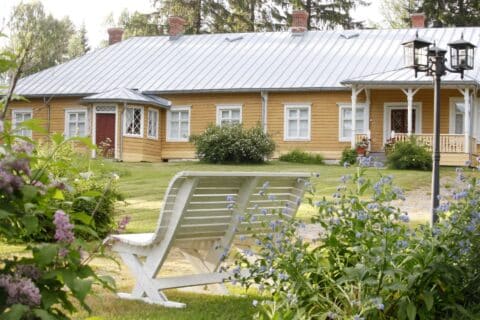Rune Singer’s House
Parppeintie 4
82900 Ilomantsi
Parppeinvaara Rune Singer's Village +358 50 375 8787 parppei@ilomantsinmuseot.fi
Visit websiteThe Rune Singer’s House was built in 1964 to commemorate the Rune-Singers and the Karelian architecture. The architect of the House was Aulis Kalma. The Rune Singer’s House was he first post-war building to be constructed in the traditional Karelian style in Finland.
Ilomantsi’s secluded location on the border between the Lutheran and orthodox cultural areas has greatly influenced the area’s Karelian culture. The atmosphere and exhibits of the Rune Singer’s House convey the ambience of an old Karelian cottage. The know-how to sing runes and play the kantele as a tradition which passed on from one generation to the next has been preserved in the area for relatively long.
In addition to runic songs and playing the kantele in the Rune Singer’s House, one can also explore the exhibition which tells about the history of Parppeinvaara’s Rune Singer’s House, Finland’s national instrument, kantele and the history of runic songs in Ilomantsi, Finland’s easternmost municipality. The Runesinger’s House also showcases an extensive collection of the national epic, Kalevala in different languages. In summer, there are also themed exhibitions.
The Rune Singer’s House is part of the Parppeinvaara Runesinger’s Village. At Parppeinvaara you’ll find a collection of historic buildings based on the theme of local tradition. These include the Rune Singer´s House with traditional music and exhibitions; the Border General´s Cabin, a war-time operational headquarters; Restaurant Parppeinpirtti with a Karelian menu; and a small Orthodox chapel. The exhibition of the Mesikkä Animal Museum exhibits local nature, wildlife and the relationship between people and nature.





